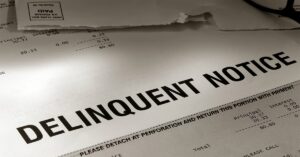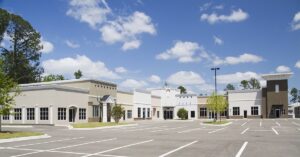The capitalization rate, or cap rate, of a commercial property is a fundamental metric for evaluating the value of commercial real estate, but how many mortgage brokers and investors fully understand it?
Commercial property is evaluated differently than owner-occupied homes. Homeowners and homebuyers often look only at comparable sales in their market to determine value. Since this method relies strictly on market data and current sales, and not on potential income, this method is seldom used for commercial or investment properties. Commercial properties rely more heavily on the income approach or the income-capitalization method for determining value. The income approach requires an understanding of cap rates.
Let’s say an investor wants to earn a 5 percent return on their money and buys a property that generates annual net operating income (NOI) of $50,000. That 5 percent return on investment is defined as the cap rate. In this case, the property would need to sell for $1 million to yield $50,000 a year at a 5 percent return. The cap rate can be derived from simple math ($1 million multiplied by 5 percent equals $50,000). The cap rate also can be calculated by dividing a property’s NOI by its market value (if we use the previous example, $50,000 divided by $1 million equals a cap rate of 5 percent).
If the investor demanded a 6 percent return, the same property would need to sell for $833,333. So, a property value will change based on the rate of return that an investor expects to earn on the investment. As cap rates rise, the values of the asset must fall. Conversely, as cap rates decline, asset prices tend to rise.
Calculating cap rates
The first step in gauging the value of a property is to determine its net operating income. NOI is the net cash flow generated by a property after subtracting the operating expenses from the gross income.
Gross income includes rents, common charges, parking revenue and all other income sources. Operating expenses are the costs associated with running the property, such as utilities, repairs, maintenance, taxes and allowances for vacancies. Different property types will have different operating expenses. An accurate assessment of income and operating expenses are needed to assess the cap rate.
Let’s consider another example. Say the owner of an apartment building is listing their property for $1.95 million. After due diligence, you determine that the net cash flow is $135,000. The cap rate on this transaction would be 6.92 percent.
Another way to view this concept is to understand that a cap rate represents the yield an investor would earn on an all-cash transaction without financing. In the previous example, an all-cash investment of $1.95 million would yield an annual return of 6.92 percent to the investor. It should be clear now that the cap rate is inversely proportional to the sales price. If you were able to buy this property for $1.75 million instead of $1.95 million, the cap rate on this investment would increase to 7.71 percent.
What is good value?
Lenders are asked daily what a good cap rate is, or what cap rate an investor ought to try to negotiate. The answer depends on many factors, including the geographic market, the risk inherent in the property and general interest rates in the market.
Let’s start with the geographic market. In healthy urban and suburban markets, you generally expect prices and demand to be steady or increasing. In these markets, cap rates might be relatively low. On the other hand, in rural and declining markets, asset prices might not be increasing, and tenant demand might be low. Low demand would mean higher vacancy rates and longer lease-up times. In this type of market, you might expect to see higher cap rates.
Next to consider is the risk within a specific property type. Nationwide, apartments are generally perceived as having the lowest risks and highest occupancy rates, while specialized properties might have the highest risks and longest lease-up periods. Consider, for example, a bowling alley or skating rink. If a tenant were to vacate these properties, it might take many months, or even years, to find a suitable tenant. In many cases, extensive capital improvements might be necessary to attract another tenant. These properties often have the highest cap rates.
More market factors
Lastly, we need to consider general interest rates in the market for other investments. Let’s say an investor is able to buy Treasury bonds at 3 percent. Treasuries are the safest investment you can purchase and have relatively zero risk.
The cap rate on a real estate investment must include a premium over the Treasury rate. Why buy an income-producing property for a 3 percent return if you can buy a Treasury bond at the same rate instead? The amount of the premium depends on the factors that were discussed above. A prime apartment building located in a solid market might trade at a 5 percent cap rate. A lower-quality asset in a weaker market, however, might trade at an 8 percent cap rate. Some investors would prefer the safer investment and settle for a lower return.
Investors and mortgage brokers ought to view the cap rate as the return on investment. More aggressive investors might prefer a higher return coupled with higher risk. Many investors today, for example, like the safety of investing in triple net lease (NNN) properties leased to national credit tenants, such as drugstores, dollar stores and other big-box retailers. The risk with these properties is much lower. The tenant is typically required to cover all expenses and the rents are guaranteed by a big public company. Although these properties are very safe investments, the trade-off is that the properties usually sell at very low cap rates.
• • •
There is one more point to consider. In times when bank interest rates are high, real estate prices generally go down. Investors will expect to earn returns that exceed bank deposits. When bank interest rates are low, real estate prices typically increase because investors are willing to earn a lower return on their real estate investments. And as previously discussed, as cap rates go up, sales prices and values go down.
Author
-
Stephen A. Sobin is the founder and president of Select Commercial Funding LLC, a nationwide commercial mortgage brokerage company. An industry veteran with more than 35 years of mortgage lending experience, Sobin is a proud member of the InterCapital Group, a nationwide alliance of commercial mortgage professionals. Reach Sobin at (516) 596-8537 or visit selectcommercial.com.
View all posts


















































